Australia So Much to See


Mount Isa – Mining and Fossils
Mining
The lead-silver-zinc
and copper ore bodies are mined separately. The position, extent and quality of the minerals have already been established by
exploration drilling.
The lead-silver-zinc deposits extend from the surface to about one kilometre below. Some of the copper
deposits are 1800 metres below the surface, but are of such a high grade that it is still economical to mine them.
Processing
procedures vary according to the mineral being mined and the mine from which it has been taken.
Gold prospector John Campbell Miles with his horse “Hard Times” discovered one of the world's richest deposits of copper, silver
and zinc during his 1923 expedition into the
We were lucky to be there at a time when Palaeontologist Dr John Scanlon was working in the laboratory with the utmost patience recovering many bones fragments and working what animals these came from. He has a special personal interest in snake fossils. Due to a lack of funding, Dr Scanlon was no longer able to continue his work at the Outback at Isa Riversleigh Fossil Centre laboratory but he has still retained his passion for Riversleigh.
Most of the fossils identified are direct ancestors of present day mammals, proving that
Studies of blood lead levels in a sample of children aged one to four years was conducted in 2007, with a further study in 2010. There are currently cases going through the courts suing mining company Xstrata over high lead levels causing brain damage in a number
of
Road haul on mine roads to the smelter consist of five trailers pulled by a prime mover with two motors.
Fifty six kilometres east of
Outback at Isa
The Outback at Isa Visitor Centre has a number of different displays including mining and geology, World War II history, and a tour of an underground mine (created for display purposes only). It is also home to the Riversleigh Fossil Centre
and displays of fossils and mock ups of the creatures uncovered at Riversleigh. We were lucky to meet and talk
with resident Palaeontologist Dr John Scanlon about the recovery and identification of Riversleigh fossils prior to funding cuts terminating
his work at the centre.
War history
During World War II an underground hospital was constructed, although fortunately this was never needed. In
1942,
Within the Outback at Isa Visitor Centre, the Riversleigh Fossil Centre has displays of how the fossils found at Riversleigh may have
looked when alive in their environment. There are also cabinets showing fossils that have been recovered from the Riversleigh
site.
Hard Times display mine
This display mine has been constructed 22 metres below the park around the Outback in Isa Visitor Centre. Physical safety and health measures in underground mining have improved dramatically in recent years, and with modern mining equipment,
the size of tunnels has greatly increased. Remote machinery is now used in high risk areas. Temperatures can reach up
to 60º when two or three kilometres underground.
We took the underground mine tour, where mining
techniques from the 1960s are demonstrated, and explanations given by the tour guide of how mining is different now. Overalls,
boots and hard hats provided must be worn, and a heavy battery for the headlamp is carried on a belt.

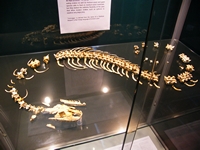
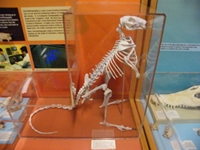
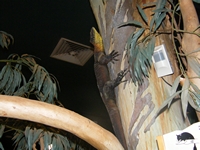
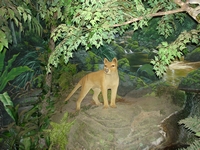
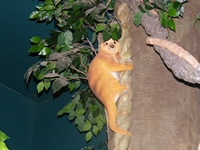
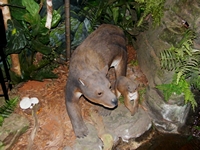
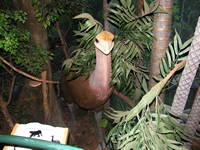
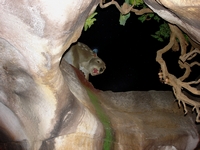
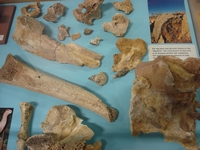
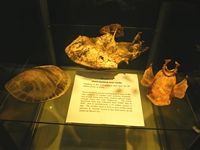
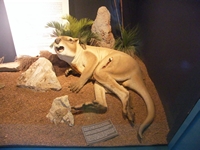
Riversleigh Fossil Centre
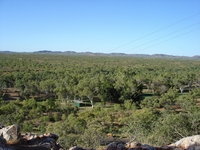
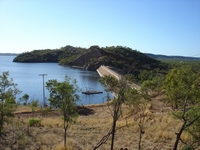
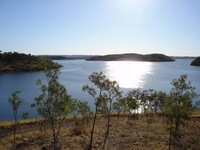
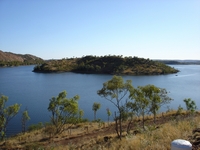
Fifteen kilometres North of Mount Isa, the
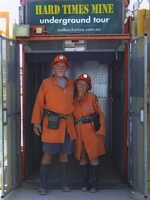
After being taken down underground in the Alimak Cage, a railcar takes the visitors around to each display point. The tour gives
a realistic and hands on experience which lasts the whole afternoon, including afternoon tea in the Crib Room.
Photography
is not permitted during this tour, and as each person leaves the lift on return and walks back into the dazzling daylight, a souvenir
photo is taken which can be purchased.
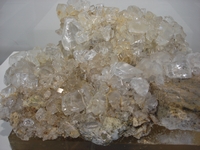
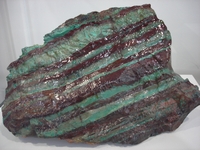
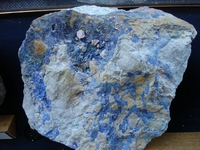
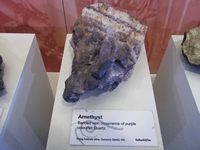
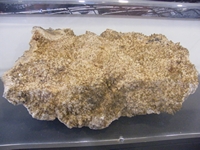
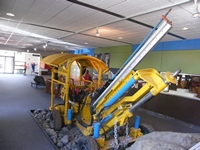
This vantage point gives a good vista of the mine and smelters plus views all around.
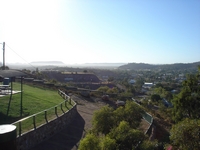
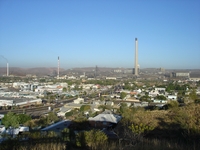
BUK Drill Rig (approximately 60 years old)
An air operated rock-bolting machine, controlled by one man. Drill rods are used to drill bolt holes 2.4 metres deep into the
walls and roof of the underground tunnels. Rock bolts are driven in and secure wire over the layers of rock to prevent rock
falls.
Colourful and sparkling ores and crystals are on display in the mining museum area. Lead, copper, silver and zinc are mined;
silver and zinc are often found in conjunction with lead.
WWII ½ ton Dodge Weapons Carrier
Used by the Walton family and associates in the search for Uranium. The vehicle broke down in a creek crossing and while being
repaired, other members of the party found some response on a Geiger counter that some days later led to the discovery of what was
to become known as Mary Kathleen Mine.
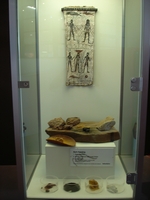
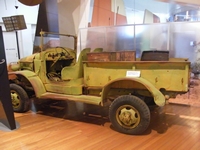
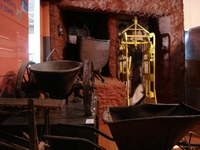
Mary Kathleen
The chimney of the lead smelter is the most dominant feature of the